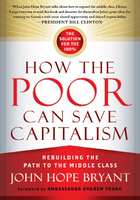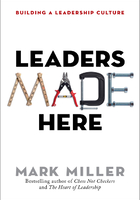The Real World
Different people at different levels of different public organizations define their work environments in different ways. If you are at or near the top of a health or human services agency, you tend to see things in one way. If you are in the middle of a public works hierarchy, then you probably see things somewhat differently. If you are just starting your career in an environmental bureaucracy, you probably see things in a still different way. But public managers, veterans and novices alike, live in what is often called "the real world"—a world of agendas, budgets, and meetings, a world of strategies, internal and interagency political games and power plays, a world of turf battles and empire building. It is a world of relationships with private contractors, interest groups, citizens' organizations, and the media. It is what academics might call an instrumental world, characterized by goal-setting, priorities, and deadlines. It is a world in which you may sometimes need to sit with your back to the wall in order to survive. It is a world of climbers, jungle fighters, and even statesmen and women. It can be exciting, tedious, fulfilling, monotonous, inspiring, or dull, depending on the day, the people around you, the mood you are in, the conversation you just had with your boss, or any number of other things. It is, in other words, the world of work in American public service.
But what makes this world real? Or to put it another way, real compared to what? Is the reality of this world based on the fact that there are consequences that go with decisions and actions, consequences that affect people's lives or agencies' futures? Is it based as well on the explicit and implicit power relationships that tend to govern behavior? Does it also include the focus on getting the job done?
If these are at least a few of the relevant considerations in determining what makes the administrative world real, then we must note that these characteristics can be found in other worlds as well. For example, despite its image as a protected and placid environment of navel gazers, even the academic world is replete with the very attributes associated with so-called more practical settings. On university campuses, the issues of accountability and responsibility are real and enduring in the lives of students and academic staff, and we must not forget that, despite its ivory tower image, the academic world continues to hold the keys to the kingdom, namely, the credentials that many, including public managers, seek to advance their careers. The point here is twofold: first, to locate public administration in the larger landscape of work, and second, to explore the real world of contemporary American public administrators.
CHALLENGES OF PUBLIC ADMINISTRATION
Because many practitioners and scholars have described American public administration, taking at least a brief look at some of their contributions is required for situating it within the spectrum of organizations and activities in the early twenty-first century United States. This brief look should help us understand better both the immediate environment and the larger world of public service.
For example, in a primer for public managers entitled How to Manage in the Public Sector, Gordon Chase and Elizabeth Reveal (1983) depict the reality of public administration and provide practical advice to managers at all levels of government. Chase, who died in 1980, and whose work was completed by Reveal in 1982, began his career as a foreign service officer. He then served in the White House in national security affairs, moved to the Equal Employment Opportunity Commission, and then served as New York City's health services administrator. In addition to his government service, Chase taught at the Kennedy School of Government as well as Brandeis University.
In six short chapters, Chase and Reveal characterize the relationships between public managers and their bosses, other managers, legislators, communities, interest groups, and the media. After noting that government, which is ultimately about implementation, or turning policy into practice, consists of an extraordinary cast of characters, Chase and Reveal maintain that "what makes public management so hard" and so interesting "is that all these players act simultaneously, with few clear lines of authority, constantly changing public mandates, and frequent turnover of people" (15). Thus, to be effective, a public manager must master this world, and not become befuddled by the politics or disconcerted by the mixed signals, or unsure of one's agenda and purpose. This environment is political and complex, and in order for managers to deliver or produce, they must turn this environment to their advantage. They must be able to anticipate conflict, promote their agenda, and earn the respect of both friends and adversaries. The only alternative is failure.
The public organization, however, is not distinctive, let alone unique, because of its hierarchical challenges, personnel problems, or daily demands and pressures. Private organizations experience similar vagaries and vicissitudes. What is notable about public organizations, of course, is their special responsibilities to citizens, elected officials, and political appointees and the different levels of scrutiny, oversight, and accountability expected of them. In this context, the question of managerial effectiveness is a constant. It is an indelible element in the study and practice of public administration, although the meaning of effectiveness and its connection to other variables remain perplexing issues. For example, there seems to be no consensus on a definition of effectiveness, nor is it clear at what level in the organization effectiveness is to be measured. Nonetheless, there is agreement that managerial effectiveness is somehow linked to the attainment of specific results or outcomes. Furthermore, a public manager's effectiveness is believed to be associated with several variables such as skills, education, personality, management style, and, not surprisingly, experience, although the degree to which each of these variables is related to effectiveness is still unclear. In any event, effectiveness, however defined, is a matter of continuing concern in the real world of public managers.
Such concern is reflected, for example, in the Government Performance and Results Act of 1993. This initiative, as well as similar ones at the state and local levels, requires public agencies to conduct strategic planning, to identify performance outcomes, and to measure these outcomes through performance reviews. Agencies need specific performance indicators, in order to assess their activities and make better decisions. Planning, benchmarking, and evaluation are among the essential tools of public managers in this national emphasis on increasing governmental productivity, performance, and accountability. They are part of the high-pressure world of contemporary public service, in which intergovernmental and public-private relations, technological complexity and change, and cultural diversity are important ingredients in the daily diet of the public manager.
Many observers describe the world of the public manager as varied, fragmented, and hurried. In this environment, public managers play many roles, such as leader, negotiator, and conciliator. They function in the midst of competing claims about the distribution of resources, interpretations of legislative intent, policy, and process, and conflicting views of the management of personnel, information, and budgets. Public managers, therefore, need a wide range of attributes, attitudes, and skills to survive and to succeed.
Gordon Chase (1984) identified five particular skills and characteristics that public managers should have: (1) negotiation and persuasion skills, (2) a thick skin, (3) an ability to learn and move quickly, (4) leadership skills, and (5) a willingness to live with uncertainty. Whether you are a public manager at the national, state, or local level, you are undoubtedly involved in all of these activities in one way or another. Furthermore, you are well aware that the higher you are in the hierarchy, the more important these skills and characteristics tend to be, especially in the face of increasing ambiguity. As the old saying goes, "The political winds blow hardest at the top."
ETHICS IN PUBLIC ADMINISTRATION
Clearly, public managers have their hands full. Their environment is complex and complicated, involving multiple constituencies, responsibilities, and challenges. Their skill, competence, and commitment are tested daily as they try to respond to those constituencies, fulfill their responsibilities, and meet the challenges they face. Nonetheless, there is another set of challenges and another set of skills that are equally implicated in effective public management: the ethical dilemmas that all public managers confront and the skills they need to resolve them in an effective manner.
Ethics in American public service is by no means a new topic; it extends back to the founding of the Republic, through reforms of the late nineteenth and early twentieth centuries, and finally to the explosion of the study and practice of ethics in recent years. Public administration practitioners and scholars, individually and collectively, have turned their professional spotlights on the exercise of ethical public administration, including the challenges of discretion, choices, and accountability, partly in response to what Carol Lewis (1991) calls "catastrophic irrationalities such as two world wars, genocide, and atom bombs" that "taught us the power of organization." She argues that "bureaucratic atrocities, misguided efficiencies, errors, and blind spots begged for explanation" (8). Other observers trace the current interest in governmental ethics to Watergate and the other "gates" that followed, which, in turn, led to such developments as the creation of the Independent Counsel, the Ethics in Government Act, the Office of Government Ethics, designated agency ethics officials (DAEOs), ethics commissions on the state and local levels, and ethics advisors—indeed, a veritable ethics establishment (Morgan and Reynolds 1997), including a cottage industry of administrative ethics specialists on university campuses and in consulting firms.
For some, ethics is, ironically, big business. Regardless of the sources, motivations, and incentives behind the recent surge of interest and initiatives concerning ethics, the words of James Madison in Federalist Paper No. 51 (1787–1788) still have a contemporary resonance:
If men were angels, no government would be necessary. If angels were to govern men neither external controls on government would be necessary. In framing a government which is to be administered by men over men, the greatest difficulty lies in this: you must first enable the government to control the governed; and in the next place to oblige it to control itself. A dependence on the people is, no doubt, the primary control on the government; but experience has taught mankind the necessity of auxiliary precautions.
It is clear, his omission of women notwithstanding, that Madison's ideas ring true today. The presence of values in administrative choices, the importance of administrative decisions, and the impact of public policies on citizens are undeniable. The question for public managers and agencies, however, is how to respond to "the old philosophical proposition that, ideally, government is ethics institutionalized for pursuing the public good" (Lewis 1991, 7). With this proposition as a backdrop, as well as the specific events that have led to the current resurgence of ethics in the public sector, what can be said about government's response to both citizens' expectations of moral behavior by government officials and internal institutional pressures for reform?
Ethics is one of the proverbial motherhood-and-apple-pie issues. Who can be against it? In policy terms, it is analogous to protecting the environment or providing equal opportunity. But as public managers know, it is one thing to favor environmental protection or equal opportunity; it is quite another to deal with the particulars of either. For example, although most Americans support the general goals of environmental protection and equal opportunity, there are deep divisions among them concerning the specific ways to achieve them. When framed in "either-or" terms as in jobs or the spotted owl and affirmative action or reverse discrimination, we tend to find that, indeed, the devil is in the details. Ethics is similar. Even though we are all for it, on some level, actually doing it—especially at work—is another matter.
But therein lies the rub. What does "doing ethics" mean, especially at work? How is ethics understood and interpreted in the real world of public administration? These are tough questions, partly because the answers vary, depending on the particular agency involved, and partly because they imply multiple approaches and perspectives. Nonetheless, despite the variety of responses, public administration tilts toward the legalistic, or compliance, mode. John Rohr (1989) calls it the "low road" or "adherence to formal rules" (60). "Ethical behavior is reduced to staying out of trouble," which results in "meticulous attention to trivial questions" (63). In Lewis' words, the compliance mode is "largely proscriptive, coercive, punitive, and even threatening…designed to spur obedience to minimum standards and legal prohibitions" (9). What this means for public managers, not surprisingly, is oversight, controls, and sanctions. For, after all, this is familiar terrain. Compliance is embedded in government operations; it is fundamental to how public organizations function; and public managers are expected to be accountable.
Since, at this point, our focus is on understanding and interpreting ethics in the real world of public administration, we will not now explore alternative perspectives. Those will come later. For now, let us examine in more detail the nature of the compliance mode and the ways in which it is reflected in the thinking, deciding, and doing of real public administrators. This should give us a benchmark for understanding ethics and quality and the connection between them in the American public service.
In considering the compliance mode in public sector ethics, we first must acknowledge its value. Again, to cite Lewis, "compliance is fundamental to the way the public business is conducted. As guardians of political relationships and political goals, controls are accountability implemented" (10). Such controls, for example, can be found in the traditional managerial functions of budgeting and personnel. Indeed, American government has emphasized accountability since its inception. Therefore, the importance of accountability is unquestionable. The essential issue, however, concerns the nature and scope of accountability, whether it translates into simple compliance or obedience to statutes or regulations, as though they are clear in and of themselves, or whether public administrators should be expected to demonstrate independence of mind by exercising judgment and discretion in meeting their obligations as public servants.
Clearly, as the alternatives are framed, the latter is preferable to those of us who see ourselves as mature, responsible, experienced managers. But life in the bureaucracy is seldom that simple. The choices confronting the public manager usually call for both compliance and judgment, thus requiring the manager to attempt a balance between the two. It is not an either-or matter. Yet, in the real world of public administration, it is often difficult to exercise independence of mind if such independence is not part of the institutional culture. Independence is permissible only if it is exercised within the accepted organizational and policy framework—the constellation of norms, assumptions, and technical requirements associated with a given agency's official mandate and particular culture. It is, in other words, hard to think outside the box.
Ethics, in this sense, may appear paradoxical: It buttresses traditional notions of accountability but also encourages independent thought and judgment in the context of objective moral standards. This is a tall order for anyone, particularly public managers whose professional preoccupation is with difficult and demanding choices. It is easy to understand, therefore, why the moral dimensions of public issues tend to receive short shrift in administrative circles. But the apparent paradox is misleading.
Consider, for example, the case of the U.S. Postal Service's money-order operation (Starling 1998). The question, as presented by the agency, was how to make money orders more profitable. How would you, as a member of the task force responsible for addressing this question, have replied? In all likelihood, you would have recommended changes in marketing strategies such as a new publicity campaign to increase use of money orders, or might you simply have recommended raising the price of money orders? Or, as Starling suggests, might you have raised a different question, namely, should money orders be made more profitable, in recognition of the fact "that money orders are used primarily by lower-income Americans who do not have checking accounts" (190).
As this case suggests, public managers are continually confronted with both value-laden choices and the question of whether and how those values should be made explicit. On the other hand, it is easier to ignore the values underlying the choices before us if they are either not perceived at all or perceived as beyond our bailiwick as public managers. Later in this book, we will explore the implications for public managers of confronting the panoply of values underlying both organizational and policy choices. For now, let us simply acknowledge that values are ever-present and that the compliance mode addresses only some of them.
Consideration of ethics in the public sector must include organizations themselves, especially what scholars refer to as organizational cultures and structures. An organization's culture is widely acknowledged as a powerful influence, perhaps even a determinant, of public managers' beliefs and behaviors. On both the formal and informal level, it encompasses the norms, assumptions, rituals, and other aspects of an organization's life that contribute to the creation of the organization's climate and set the tone for particular attitudes and actions. Organizational structure refers to the hierarchy, the specialization of tasks, the distribution of authority and power, and the other commonly recognized characteristics of the modern bureaucracy. Organizational structure, too, particularly with respect to a manager's level and position in the hierarchy, exerts a powerful, even determinative, influence on attitudes and actions. Taken together, organizational culture and structure are vital elements in the thinking, doing, deciding, and ethical perspective of public managers.
Given the importance of organizational culture and structure in the public service, we might ask how public organizations have tended to respond to the emphasis on ethics in recent years. For example, let us examine the results of a 1996 survey of members of the American Society for Public Administration (ASPA), to help in developing our understanding of their perceptions of ethics in society and government, integrity in public agencies, and ASPA's code of ethics (Bowman and Williams 1997). A questionnaire, with a copy of the ASPA code of ethics, was mailed to a random sample of 750 administrators who belong to ASPA. Fifty-nine percent, or about 450 responses, were usable.
The results of the survey indicate, first, that these public managers believe that contemporary interest in ethics is not just a passing fad, that "incidents of outright criminality in government distract attention from more subtle, genuine ethical dilemmas," and that private enterprise is not a standard for conducting the public's business. At the same time, nearly all of the respondents agreed that public managers encounter ethical dilemmas at work. Ethical issues go with the territory in public agencies. (518)
According to the survey results, 76 percent of these public managers believed that ethical concern can be empowering in organizations; 60 percent disagreed with the statement that "expressions of ethical concern…evoke cynicism, self-righteousness, paranoia, and/or laughter"; and 60 percent disagreed with the statement that ethics is "meaningless because organizational cultures encourage a Machiavellian philosophy of power, survival, and expediency." On the other hand, nearly 50 percent of the respondents claimed that "supervisors are under pressure to compromise personal standards" and that the "source of this stress appears to be the top levels of the organization." In the same vein, almost 90 percent disagreed with the notion that the ethical standards of senior management were higher than their own. "To summarize, these practitioners encounter dilemmas, believe that ethics can be empowering in organizational cultures, are able to surmount social taboos about discussing ethics, and perceive tension between top officials and careerists." (518-519)
The participants in this survey were asked to characterize organizational approaches to ethics. Nearly a fourth said that institutions have a reactive, primitive, low road approach that focuses on wrongdoing and staying out of trouble. Only about 10 percent suggested that organizations have a high road, or affirmative, strategy that encourages ethical behavior and deters, rather than detects, ethical problems, and almost 60 percent indicated that most organizations have no consistent approach to ethics. This lack of consistency, furthermore, relates directly to the fact that employees are often left to flounder when confronted with ethical challenges. As Bowman and Williams state, "many offices either ignore, shift responsibility, or simply have no strategy whatsoever for dealing with ethics. An incoherent, frequently passive, and/or reactive philosophy is not likely to support, nurture, or benefit those seeking to carefully resolve ethical dilemmas" (519). Finally, in this regard, when asked what works best in fostering ethics and deterring ethical lapses in their own organizations, the majority of respondents noted the importance of management by example.
Turning to codes of ethics, more than 90 percent of the respondents endorsed them. According to Bowman and Williams, one possible reason for this high level of support is that both business and government executives see codes of ethics "as an important indicator of professionalism." With regard to the code of ethics of the American Society for Public Administration in particular, again, more than 90 percent of the respondents affirmed that the "code provides an appropriate set of standards," but about two-thirds suggested that for the ASPA code to be effective, it "must be supplemented by an agency-specific code." Furthermore, more than 90 percent agreed that top management must take the code seriously for it to be given weight. (521)
In discussing codes of ethics, Bowman and Williams distinguish between codes of ethics and codes of conduct, a distinction that will be important for us later. They argue that rule-based codes of conduct are often found in statutes or executive orders. They are directive and top down, "typically imposed on (and often resented by) employees with no advice for effective implementation, training and development, or recognition of the importance of leadership modeling." Bowman and Williams describe codes of conduct as a "coercive, quick-fix strategy" that "reduces ethics to legalism by focusing on both the lowest common denominator and penalties for deviations." This strategy, in their view, "does little to promote a philosophy of excellence or to engender a sense of personal responsibility," and it does not work. "In contrast, codes of ethics demand more than simple compliance; they mandate the exercise of judgment and acceptance of responsibility for decisions rendered—the real work of ethics." What codes of ethics do, according to Bowman and Williams, is acknowledge the ambiguities and complexities of public service, and "offer interpretative frameworks to clarify decision-making dilemmas." (522)
It seems reasonable to conclude that these survey results reflect the attitudes and experiences of American public administrators as a whole with regard to ethics in the public service. Everyone, as noted earlier, supports ethical government. The nettlesome questions, however, concern the definition and scope of ethics as applied to administrative challenges, the expectations of citizens, elected officials, and public managers themselves regarding the meaning of ethical thinking, doing, and deciding in the public service, and the resolution of ethical dilemmas consistent with those expectations. As the survey data indicate, we are far from a consensus on the answers to these questions, although the general tendency among public organizations has been to respond to expectations concerning ethics in legalistic, compliance-oriented terms.
For example, one of the standard responses of public organizations to the demand for attention to ethics has been ethics training. Indeed, ethics training has become the conventional method for promoting ethical climates and behaviors in public organizations. It is required by many states and municipalities as well as the federal government. As Carol Lewis (1991) observes in regard to ethics training, however, typically, it "exclusively targets compliance with minimum statutory or administrative standards written into codes of conduct." It fails to acknowledge that public managers already use discretion and judgment every day and, thus, fails to provide them any guidance or advice on this crucial aspect of their responsibilities. (18)
In their daily activities, public managers routinely distinguish among rules, law, and actual behavior. Adaptation, innovation, and leadership require such distinctions. Selective enforcement, or bending, and sometimes even breaking, the rules to get the job done, is commonplace. Confronting complexity, ambiguity, competing values, a disconnect between going by the book and achieving goals—none of this is surprising or unusual in the public sector.
Thus, the intellectual agility, the mental prowess, and the organizational skills needed to exercise ethical analysis and judgment are already in place. The missing ingredients are (1) the recognition that compliance alone is, at least, inappropriate and, certainly, counterproductive for public managers, and (2) the institutional recognition that ethical judgment and sophistication are essential for effective public service.
Job descriptions generally do not include moral creativity, innovation, or judgment. Problem-solving ability is often limited to technical or professional problems that, although perplexing, remain within the familiar boundaries of conventional public administration. The agency expects the new employee to be morally compliant and to raise no questions about the inevitable ethical complexities inherent in the policy and organizational decisions that will arise on a daily basis. To the extent that ethics is acknowledged, it is usually perceived not as a serious matter to be attended to in a serious manner but, rather, as an added burden on an already overloaded agency. Ethics means developing or, more frequently, contracting with a consultant to conduct a legalistic training program. On the organizational level, it is another square to fill.
In such a setting, raising ethical questions can be unsettling, if not risky. If we stick to such issues as financial disclosure, bidding and procurement, and conflict of interest, we are on safe ground. If we shift to questions of judgment and justification, of principles and integrity, then we travel into alien territory. We change the viewpoint and the vocabulary, and we change the set of expectations. We go from ethical compliance to ethical consciousness, discernment, and choice. In an important sense, we move from our heads to our hearts.
In the remainder of this book, we argue that it is crucial for public managers to strive to lift the moral fog that envelops most of us, and to live in moral consciousness and choice, alert to the ethical implications and meaning of our decisions and actions, prepared to exercise moral judgment and leadership. In the following chapters, we sketch the characteristics and qualities of ethical public managers, who are clear about and close to their values and commitments. We confront the anxiety that living in moral consciousness can provoke, and we explore with you issues of decision making, problem solving and resolving, character, and excellence. In the process, we hope that principled reasoning and judgment will become somewhat like learning how to operate a computer or a new software program: At first, it is unfamiliar and, perhaps, unnerving, but ultimately you become more comfortable with it, and as your confidence increases, so does your willingness to perform in public. And, after all, the public interest and the public trust deserve no less.












